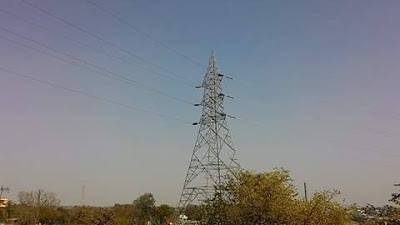Electric Power is always transmitted at the possible highest voltage level. Earlier it was transmitted at 220 kV, then after advancement of technology it raised to 400 kV. But these days in India, the highest voltage level at which electric power is transmitted is 765 kV.
Well, have you ever think of why do we transmit electric power at high voltage? Hmmm…most of us know the reason behind this. But still I will explain.
As we said earlier in this post that we are transmitting electric power. This means we have specific quantum of power which we need to transmit to load center. Therefore we can assume that power is constant. Let us assume power factor to be unity for the sake of simplicity.
Thus we can write,
P = VI as p.f=1
Therefore, I = P/V
This means that current flowing through the transmission line is inversely proportional to the voltage level. The more the voltage the less will be the current flowing through the line. What do we achieve by decreasing current flow in the transmission line?
You will say, less current means less ohmic loss i.e. I2R loss in the line. Therefore the efficiency of power transmission will increase.
You may think that as per ohm’s law the current shall increase by increasing the voltage level. Thus in transmission line, it’s the violation of Ohm’s Law. Actually it’s not true. Ohm’s Law is still valid. It shall be kept in mind that increasing voltage decrease the current at a constant power. If you transmit the 400 MW of power at 220 kV then current flowing through the transmission line will be
I1 = 400×106 / 220×103 assuming p.f = 1
= 1818 A (approx)
But if you transmit the same amount of power at 400 kV then current flowing through the line will be
I2 = 400×106 / 400×103 assuming p.f = 1
= 1000 A
Thus we see that, increasing voltage for a constant power decreases the current.
Watch the video for better understanding:
